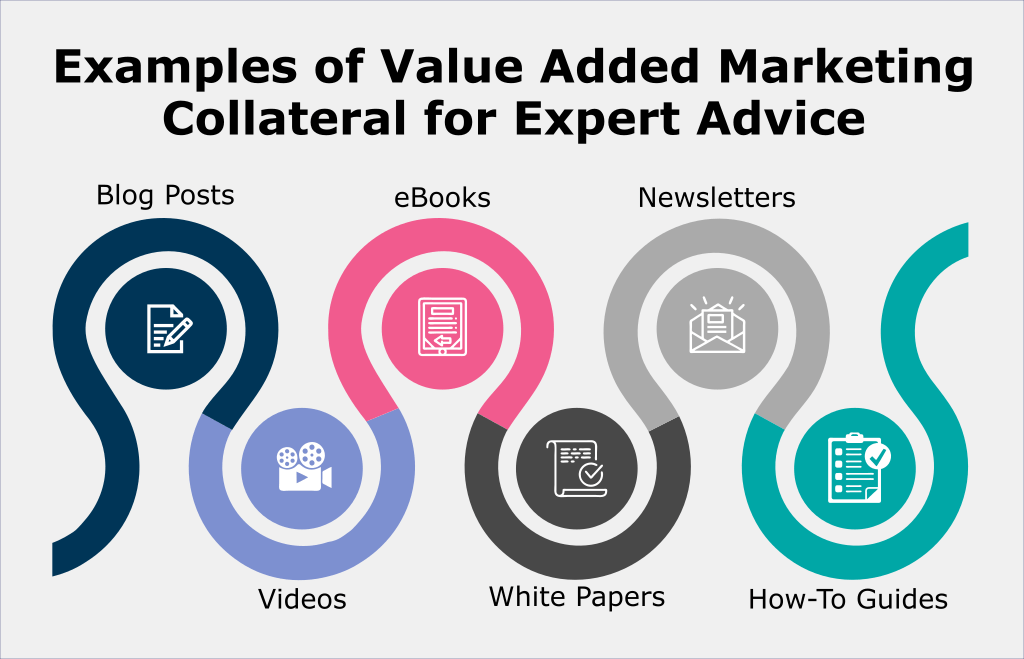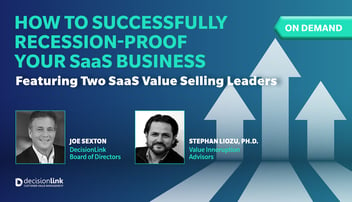Added Value Marketing Examples That Get Your Business Noticed

In today's fast-paced and technology-driven world, businesses have access to a plethora of marketing channels and methods to promote their brand. While this presents an opportunity to reach a wider audience, it also means that competition is fierce and businesses need to find new ways to stand out.
Traditional marketing methods, such as advertising, may no longer be enough to capture audience attention. Many consumers have become immune to traditional advertising and are more interested in brands that offer them added value. Enter added value marketing.
What is Added Value Marketing?
Added value marketing, also known as customer-centric marketing, puts the customer’s needs ahead of the product or brand and centers on strategies to deliver the best value for a customer’s unique wants and needs.
The value can either be financial or non-financial. Value-added marketing helps the buyer make an informed decision by presenting the financial benefits of the product and demonstrating clear ROI expectations for their use case.
Every prospect has a critical business issue they desire to solve and a language they use to describe it. In value-added marketing, appropriately positioning and quantifying solutions is the focus, taking into account that financial motivation might not be the business issue a buyer faces.
For example, moving away from a paper-based solution into a digital solution provides clear cost and productivity benefits which can be expressed in financial terms. However, there are non-financial benefits as well, such as the number of trees saved and lower carbon emissions.
To effectively implement value-added marketing, a company’s marketing messages need to express the value of all benefits.
Why Do You Need Value-Added Marketing?
You should adopt value-added marketing strategies for plenty of reasons besides the desire to grow your business and get noticed. One of the most compelling reasons to make the switch is that traditional marketing is becoming more expensive and less efficient as the demand for advertising space grows. Traditional marketing is also losing its appeal with many customers as it lacks personalization for the prospect, resulting in lower conversions and impact.
How Does Value-Added Marketing Differ From Traditional Marketing?
Traditional marketing approaches, such as product-based marketing, focus primarily on promoting the features and benefits of the product or service being sold. Although these approaches can be effective, the marketer often fails to build a strong and lasting relationship with the customer.
In contrast, value-added marketing is centered on building a strong relationship with the customer by providing additional value that goes beyond the product or service being sold. This approach not only increases customer satisfaction and retention but also leads to positive word-of-mouth referrals, which can help attract new customers.
Another difference between value-added marketing and other approaches is that it focuses on the customer's needs and desires rather than solely on the company's goals. By understanding the customer's pain points and providing solutions that address those issues, businesses can build a strong and loyal customer base that is more likely to stick around in the long term.
Added value marketing is a fresh and captivating take on marketing that fosters a healthier marketing environment and sets the stage for sellers to have compelling value-based conversations. It enables businesses to forge better, longer-lasting customer relationships and keep your brand community engaged. Customer-centric marketing also helps with client retention.
In the long run, it will earn your business valuable brand advocates. Value marketing done right will help bring down your ad spending while increasing your return on investment (ROI).
Examples of Added Value Marketing Strategies
Provide Expert Advice to Your Customers
Nobody knows your business and industry as well as you do. Instead of your interactions being based on what you can get from your customers, you can use the opportunity to teach them something new. The advice that many consultants and firms charge a premium for, you can offer your customers as an added value to your product or service.
You provide value by focusing on their priorities and how you can help them achieve their goals with your business and products.

Expert advice marketing collateral includes things like:
- Blog posts
- Videos
- eBooks
- White papers
- Newsletters
- How-to guides
Value-added marketing should offer a unique approach or offer exclusive information that your audience can’t get anywhere else. Let your industry expertise flow into your marketing to provide more sophisticated and more profound insights than your competitors offer. The content, however, should be aligned with your brand’s values.
You can also provide information on how to make the most from the products or services you sell. The more your customers understand about your product, the more value they can get from their purchase. Tips and tricks, suggestions for other applications of your product that they may not have thought about, and other in-depth tutorials are some of the marketing collateral that you can include beyond a simple user manual.
An example of a business that provides plenty of expert advice to its customers is Elastic.co. It has a slew of informational content accessible from their blog alongside product guides and video tutorials available from their “Learn” page. Elastic also organizes a variety of events where its users can learn from the creators of the product. The recently completed ElasticON Global event is one such event from their catalog of conferences and webinars.
Offering these kinds of resources shows customers you care about them and want to continue providing value — long after they bring your product home. It shows you want to connect with them on a deeper level by continuing to offer unique tips, tricks, and information on how to use your product that they can’t get anywhere else. That not just adds value to their lives, but also makes the product itself seem more inherently valuable — giving you more of a leg up on the competition.
Enhance Your Onboarding Experience
Marketing your product extends to how it is presented, not just how the product or service actually looks from a user perspective. Customers make many comparisons before making a purchase and may choose your product over your competition if the finishing touches are done better. A polished, seamless and personalized experience feels more valuable in your customer’s eyes, motivating them to choose your product or service.
A successful purchasing experience means that the customer has fewer bumps on the way as they learn and adopt the new product, easing the pressure of many inquiries on your customer support team. It also helps reduce customer churn, especially after their product trial is over.
Here are a few tips to make your presentation experience a success:
- Keep your sign-up process as easy to complete as possible.
- Send a simple welcome email and ensure the first login screen is easy to navigate and distraction-free.
- Ensure your product walkthroughs are easy to understand while being informative enough to get your customer going. (User manuals, product walkthrough videos, and interactive product tours are some of the learning materials you can present to your first-time user. Interactive content is the way to go, however, according to a report by DemandGen — 85% of B2B marketers are using or are planning to use interactive content as part of their marketing strategy, and so should you.)
The marketing doesn’t stop there, however — your business still has the opportunity to create a lasting impression. Little things like thank-you notes combined with some branded giveaway items go a long way and are an excellent opportunity to add value to your brand and show your buyers that you care about their business, their success and your mutual partnership.
Offer Excellent Customer Support
Customers have various needs, and how well you meet them determines how they interact with and speak about your brand. Negative reviews of a brand often come easier than positive ones — and companies that do not take care of the tiny things can end up losing even their loyal customers. Your customer support and follow-through determines the lasting impression your customers have of your company.
Your customers’ opinions are also very valuable since they interact with both your product and your customer care. Actively seeking feedback shows that your company is committed to making the customer experience better. Slotting in a call-to-action with your marketing collateral or even offering incentives for their feedback on B2B review sites should get you the responses you need.
While providing expert advice to your customers and having an excellent onboarding experience helps to convert prospects to customers, it is the customer support that keeps them working with you. Here are a few customer support best practices:
- Delivering a tailored customer support experience to help solve any potential roadblocks and keep them happy. Whether the customer seeks to reach the sales team, has a problem opening an account, or has a general question, help should always be close.
- Having customer service agents with technical knowledge of the product to help with product issues.
- Having a well-thought-out FAQs page that solves most user problems with your product. It saves time for both the user and your team if customers can figure out a solution on their own.
Incorporate Your Customers Into Your Brand Story
Rather than talk about your products on end, give a behind-the-scenes view of your company. This strengthens the emotional connection your customers have with your brand while enriching their experience with the company. Nobody wants to feel left out. The sooner companies realize that their clients value what goes into their products or services, the better the content they will produce. Making everyone feel like a part of the brand is a powerful tool that can dramatically influence decisions in your favor.
Taking your customers on a tour of your brand can be as complex or as simple as you desire. From conducting interviews with a couple of members of your team to giving a tour of your company headquarters, or creating short ‘day in the life’ videos of employees, the opportunities are endless. You can also use your digital media to share infographics, case studies, and testimonials.
No need to stop there. You can give your customers an opportunity to be part of the product-making process. One company that has created an incredible community is Salesforce’s Trailhead community. This community helps users learn relevant skills to connect, build relationships and share best practices with fellow users. With the ability to earn badges, provide product roadmap suggestions and feedback, and attend local and online events, the Trailhead community not only makes each user’s professional connection and commitment to Salesforce stronger, it creates personal investment in the company, too.
When you give your customers a unique way to view behind-the-scenes of what makes your company, they feel more connected — a win-win for loyalty and building relationships.
Offer Product Demos
Many buyers want to feel and touch a product before they make a purchase. It is no surprise that free trials are slowly becoming a part of the marketing world. In the minds of prospective buyers, their valuation of your product or service increases as they interact with it. Product demos also increase the perceived ownership of the product, making it easier to market and sell after the trial is over.
To make your free trials work the best, you will need to:
- Allow the user to get as close to and interact with your product as much as possible.
- Focus on the user and their wants and needs rather than on the product. If your clients can solve their problems with ease while using your product, it is easier for them to make the purchase.
- Try to personalize the trial experience as much as possible.
Free trials work because they ignite the power of reciprocity and they help clients put aside some of the focus on the cost of the product, moving it to concentration on the product’s or service’s benefits. As soon as you connect with a customer on a free trial, you also have a direct channel to advertise your product, educate them more about it, and target them for other future products.
Offer a Loyalty Program
A loyalty program is a good added value marketing example because it offers incentives to the customer, offering rewards, discounts, or other perks that they can earn by engaging with the company. Here are a few specific ways a loyalty program can add value for customers:
- Discounts or freebies: Loyalty programs often offer discounts or free items that customers can redeem after earning a certain number of points or reaching a specific spending threshold. This can be particularly valuable for customers who frequently purchase from the company and can help them save money on their purchases.
- Exclusive access: Many loyalty programs offer exclusive access to certain products, services, or events that are not available to non-members. This serves to make customers feel special and valued and can provide them with unique experiences to which they would not otherwise have access.
- Personalized rewards: Some loyalty programs offer personalized rewards based on the customer's past purchases or preferences. This can make the rewards feel more meaningful and can help the customer feel understood and appreciated.
- Early access or sneak peeks: Some loyalty programs offer early access to new products or services or sneak peeks of upcoming releases. This can make customers feel like they are part of an exclusive community and can help them stay engaged with the company.
Overall, a loyalty program adds value for customers by offering rewards, discounts, or other perks that make their experience with the company more enjoyable and rewarding. This can increase customer loyalty and lead to long-term relationships with the company.
Personalize Your Offerings
Personalization is valuable for customers because it enhances their overall experience with a business.
By tailoring products, services, and interactions to each customer's individual needs and preferences, personalization creates a more engaging and satisfying experience. It also ensures that customers are presented with products and services that are relevant to their interests and needs, improving their overall satisfaction with the experience.
Moreover, personalization can improve the efficiency of the customer's interactions with the business, making it easier and quicker for them to find relevant information or complete a transaction.
Additionally, personalization can help businesses build stronger relationships with their customers by showing that they understand their customers’ needs and value them as individuals. This can increase engagement and loyalty, leading to higher revenue for the business.
Finally, personalization can help businesses recommend products and services that the customer is more likely to purchase, based on their past behavior or stated preferences, leading to a more successful sale and an overall improved customer experience.
Incorporate Social Responsibility
Social responsibility on the part of a company can be an added-value marketing example in several ways. Firstly, it can enhance the customer's perception of the company because they are more likely to favorably view a socially responsible company. This can lead to a stronger emotional connection between the customer and the company, increasing loyalty and advocacy.
Secondly, social responsibility can help a company differentiate itself from competitors by providing a unique selling proposition that can attract and retain customers. By demonstrating that it cares about the environment, social issues, or the welfare of its employees, a company can show that it has values beyond just profit, which can appeal to customers who share those values.
Social responsibility can also improve the quality of the customer's experience with the company. For example, a company that uses sustainable materials in its products may provide a better product experience because the customer knows that their purchase is not contributing to environmental damage. Additionally, a company that supports a social cause or charity may provide customers with a sense of satisfaction in the knowledge that their purchase is contributing to a good cause.
Finally, social responsibility can also help a company manage risk and avoid reputational damage. By demonstrating that it is socially responsible, a company can mitigate the risk of negative publicity or consumer backlash, which can damage its brand and reputation.
Summary
As more and more companies emerge on the market, it is becoming increasingly tougher to get and keep customers’ attention. As more ads pass through your customers’ lives each day, they grow tired of traditional advertising.
Value-added marketing is the most effective way for companies to succeed in the current marketing environment. Since the client is the core of customer-centric marketing, it is easier for the marketing messaging to resonate with them. This creates a good relationship with your customers. Added value marketing is also an opportunity to educate and entertain your customers while establishing yourself as an authoritative force in your field of business.
The added value strategies discussed above are just the tip of the iceberg of what you can do to drive value to your customers. As the market continues to shy away from traditional marketing, brands that add value to their customer interactions will have a competitive advantage.
To continue learning about Value Marketing, read our "New World. New Way to Engage" whitepaper, written BY marketers, FOR marketers in this new Value Era.

 ValueCloud
ValueCloud
.png?width=118&height=76&name=Rectangle%20(3).png) ValueCloud Ignite
ValueCloud Ignite
.png?width=92&height=92&name=Rectangle%20(4).png) Free Assessment
Free Assessment
.png?width=100&height=100&name=Rectangle%20(5).png) Watch a Demo
Watch a Demo
.png?width=82&height=96&name=Rectangle%20(6).png) Value Calculator
Value Calculator

.png?width=62&height=51&name=Group%2010%20(1).png) Marketing
Marketing
 Sales
Sales
 Customer Success
Customer Success
 Engage Prospects
Engage Prospects
 Win Deals Faster
Win Deals Faster
 Retain Customers
Retain Customers
.png?width=62&height=62&name=Rectangle%20(8).png) Adopt and Scale
Adopt and Scale
.png?width=54&height=54&name=Rectangle%20(9).png) Cybersecurity
Cybersecurity
 Healthcare
Healthcare
.png?width=54&height=54&name=Rectangle%20(10).png) IT & Software
IT & Software




